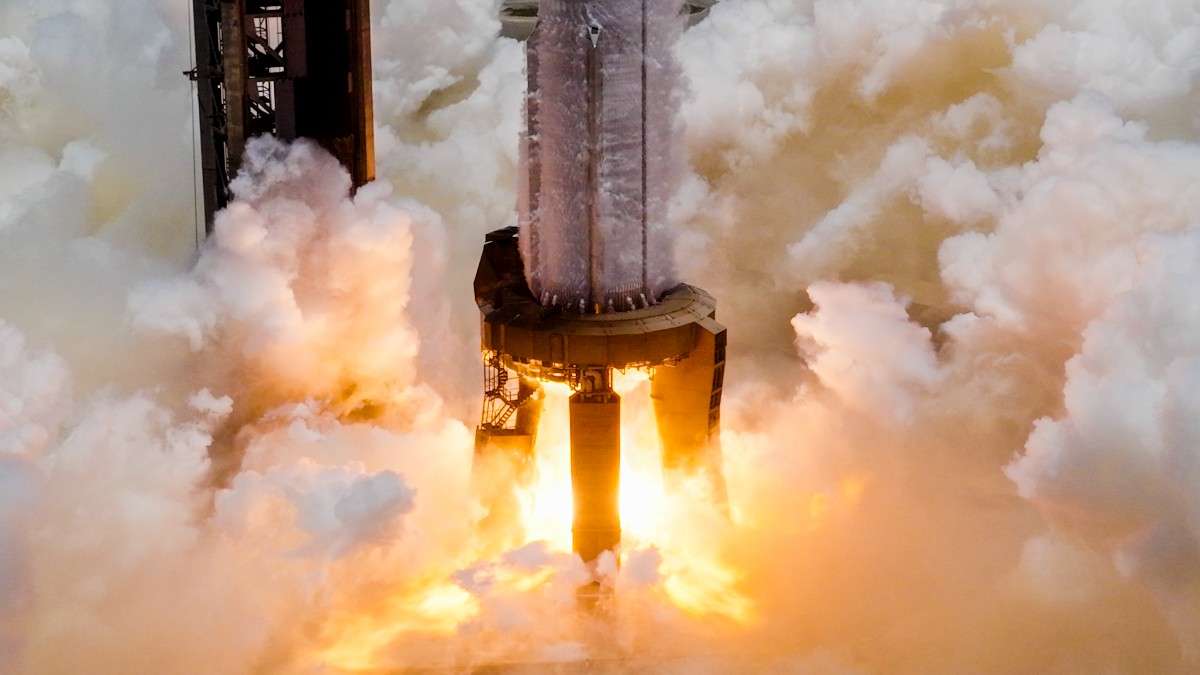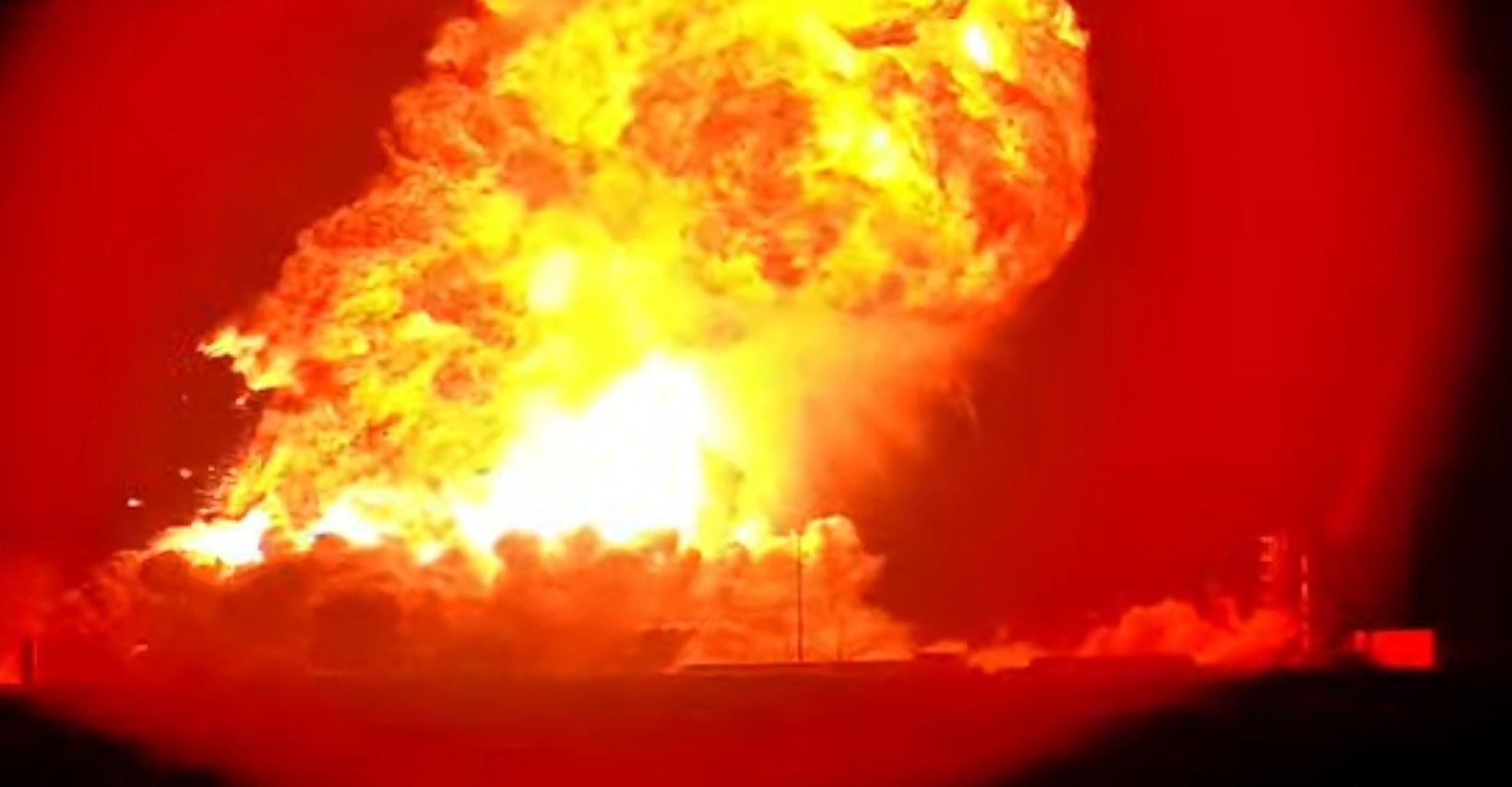A static fire test is a key part of reusable rocket development. Learn what it is, why it matters, and how it helps companies like SpaceX and Blue Origin ensure rocket safety before flight.

Static Fire Test: An Introduction
In the world of space exploration, especially with the rise of reusable rocket technology, one term is frequently mentioned: the static fire test. This crucial procedure is a major step in the launch process. It helps engineers detect faults, improve safety, and ensure rocket readiness.
Let’s understand what a static fire test is, why it’s important, and how it supports the success of reusable space vehicles.
What Is a Static Fire Test?
A static fire test is a ground-based test where a rocket’s engines are ignited while the rocket remains firmly attached to the launch pad. The test usually lasts just a few seconds but is conducted under full conditions—with fuel, pressure, and real-time systems.
Unlike a full launch, the rocket does not lift off during a static fire. Instead, it stays locked in place while the engines fire, allowing teams to monitor performance safely.
Why Is It Called “Static Fire”?
Static: Because the rocket stays stationary (it doesn’t fly).
Fire: Because the engines are ignited and burn fuel under real conditions.
Why Static Fire Tests Are Important in Reusable Rockets
Reusable rockets—like SpaceX’s Starship, Falcon 9, or Blue Origin’s New Shepard—are built to launch, return, and fly again. This requires extreme reliability.
A static fire test helps engineers:
- Check engine ignition and shutdown systems
- Test fuel flow, pressure, and valve controls
- Monitor vibration and thrust alignment
- Validate electrical, thermal, and guidance systems
- Ensure re-used components are still functioning properly
For reusable rockets, these tests are performed before the first flight and sometimes after refurbishment to confirm the system can safely fly again.
What Happens During a Static Fire Test?
Fuel Loading: The rocket is filled with cryogenic fuels like liquid oxygen and methane or RP-1.
Engine Ignition: Engines are fired for a few seconds (typically 3 to 10 seconds).
System Monitoring: Engineers collect data on temperature, thrust, vibration, software response, and pressure.
Shutdown: Engines are shut down manually or automatically.
Analysis: If the test is successful, the rocket is cleared for launch. If not, engineers investigate and fix the issue.
Static Fire in Reusable Rocket Programs
1. SpaceX Falcon 9 and Starship
SpaceX conducts a static fire test before every Falcon 9 launch.
The Starship program uses static fire tests for both the booster (Super Heavy) and upper stage, often resulting in dramatic fireballs if a problem occurs.
2. Blue Origin New Shepard
The single-engine New Shepard rocket is static fired to ensure systems are “go” for its suborbital flights.
Reusability makes repeat tests critical for safety.
3. NASA’s SLS and Other Rockets
Even partially reusable systems undergo static fire testing to validate their engines before major launches.
Risks of Static Fire Testing
Although it’s done on the ground, static fire testing is not without danger. Failures can include:
- Explosions from fuel leaks
- Engine overpressure
- Structural collapse
- Software command errors
For example, SpaceX’s Starship 36 was destroyed during a static fire in June 2025 due to a likely propellant or pressure-related failure.

How It Helps the Future of Reusable Rockets
- Improves safety by detecting issues before flight
- Extends hardware life through real stress testing
- Reduces launch costs by preventing in-flight loss
- Builds public trust in reusability and space tourism
- Static fire tests are a key part of quality control that supports sustainable and safe access to space.
Conclusion
A static fire test is a short but vital procedure that helps ensure reusable rockets can fly safely and reliably. As space agencies and private companies push the boundaries of space travel, this ground test remains a powerful tool to protect both missions and investments.
With more reusable rockets entering the industry, expect static fire tests to remain a routine and essential part of every launch campaign.
Source:-
https://en.m.wikipedia.org/wiki/Launch_vehicle_system_tests
Static Fire Test Explained – Frequently Asked Questions (FAQ)
1. What is a static fire test?
A static fire test is a ground-based procedure where a rocket’s engines are ignited while the vehicle remains fixed to the launch pad. The purpose is to simulate launch conditions without the rocket actually lifting off. It allows engineers to assess engine performance, fuel systems, and overall readiness before flight.
2. Why is a static fire test necessary?
Static fire tests help identify technical issues early. They:
- Confirm the engines ignite and shut down correctly
- Test fuel flow, pressure systems, and valves
- Verify that software, sensors, and electrical systems respond properly
Ensure safety before launch
3. Is a static fire test done before every launch?
For many companies, especially those using reusable rockets (like SpaceX’s Falcon 9), static fire tests are conducted before every launch. For experimental vehicles like Starship, they are performed more frequently due to new designs being tested.
4. Do static fire tests always use full power?
Not always. Engineers can adjust:
- Duration (usually 3–10 seconds)
- Throttle level (partial or full engine power)
Number of engines fired at once
These parameters vary depending on the goal of the test and the rocket type.
5. Does the rocket leave the ground during a static fire?
No. The rocket remains securely clamped to the launch pad. The engines fire, but the rocket does not launch.
6. What are engineers looking for during the test?
They monitor:
- Engine thrust, stability, and timing
- Fuel and oxidizer pressures
- Temperatures inside tanks and engines
- Software responses
- Communication with ground control systems
All of this helps validate the rocket’s condition before launch.
7. Are static fire tests risky?
Yes, they carry some risk. Since the engines are ignited and propellants are involved, failures can lead to:
- Fires
- Explosions
- Structural damage
For example, SpaceX’s Starship 36 was completely destroyed during a static fire test due to a likely overpressure or engine-related failure.
8. What happens if a static fire test fails?
If a test fails:
- The launch is delayed
- Engineers analyze the failure data
- Necessary repairs or redesigns are made
- A new test may be scheduled
9. How is static fire testing different for reusable rockets?
For reusable rockets, components must withstand multiple flights. Static fires help ensure:
- Re-used engines still work correctly
- Heat and vibration tolerances are maintained
Systems are safe for another flight
10. What rockets undergo static fire testing?
Some examples include:
- SpaceX Falcon 9 and Falcon Heavy
- SpaceX Starship and Super Heavy Booster
- Blue Origin’s New Shepard
- NASA’s Space Launch System (SLS)
- Rocket Lab’s Electron
What is SAR Satellite Technology? The Eyes in the Sky That See Through Clouds, Darkness, and Time
